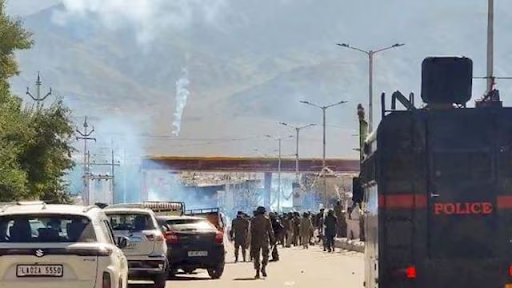



The clash between India’s judiciary and executive intensified following a Supreme Court ruling declaring the Governor's refusal to approve state bills as "illegal." This conflict, fueled by concerns over judicial overreach, highlights tensions over power distribution among the branches of government, with implications for democracy and constitutional roles.

Copyright infringement not intended
Picture Courtesy: VYGRNEWS
The clash between judiciary and executive, triggered by a Supreme Court ruling on the Governor's power to withhold assent to state bills.
Government has three main branches: the legislature (Parliament and state assemblies), the executive (President, Prime Minister, Governors, etc.), and the judiciary (Supreme Court, High Courts, and lower courts). These branches share power to run the country smoothly. The Constitution defines their roles, but recently, tensions have erupted between the judiciary and the executive.

Vice President and some Member of Parliaments leaders claim the Supreme Court is acting like a “super Parliament” by making decisions that belong to the executive or legislature. The judiciary defends its actions, saying it is protecting the Constitution and ensuring justice.
 Key Issues in the Conflict
Key Issues in the ConflictSupreme Court Ruling
The Supreme Court recently made a landmark decision in a Tamil Nadu case. It ruled that the Governor's refusal to approve 10 bills passed by the state assembly was “illegal” and “arbitrary.” The court set a three-month deadline for the President and Governors to clear bills passed by state legislatures.
The Vice President argues that courts shouldn’t dictate timelines to the President, a position considered supreme and beyond judicial control. He called the court’s use of Article 142—a constitutional power allowing the Supreme Court to pass orders for justice—a “nuclear missile” against democracy.
Article 142 and Judicial Overreach
Article 142 provides the Supreme Court special powers to issue orders ensuring “complete justice.” Critics say the court uses this power too freely, acting like it can legislate or govern.
The Vice President argues judges are performing executive functions, like setting deadlines for the President, which oversteps their role of interpreting laws. He insists Parliament is supreme and elected representatives should have the final say on constitutional matters.
Waqf Amendment Act Controversy
The Supreme Court is also hearing challenges to the Waqf (Amendment) Act, 2025, which changes how Waqf properties (land or assets dedicated for Muslim religious purposes) are managed. The court questioned the Centre about derecognizing “Waqf by user” properties and ensured no changes to Waqf boards would happen until the next hearing on May 5.
This clash isn’t just a legal debate—it is about who holds power in Indian democracy. The Constitution says all three branches are equal, but each has specific roles. The legislature makes laws, the executive implements them, and the judiciary checks if they’re constitutional. When one branch oversteps, it disrupts this balance. For example, if the judiciary sets deadlines for the President, is it protecting democracy or acting like an unelected ruler? If the executive ignores court orders, does it weaken the rule of law?
Some experts warn that the Supreme Court’s use of Article 142 could pull it too deep into governance, leading to “unpredictable consequences.” On the other hand, many experts support the court, arguing that it must act when the executive fails to follow the Constitution. PM Narendra Modi adds a neutral voice, saying the judiciary is getting stronger but must also be “perfect” to meet people’s expectations.
Must Read Articles:
Sanity to Constitutional System
Source:
|
PRACTICE QUESTION Q. Critically evaluate the impact of Public Interest Litigation (PIL) on the debate surrounding judicial review versus judicial overreach. 150 words |






© 2025 iasgyan. All right reserved